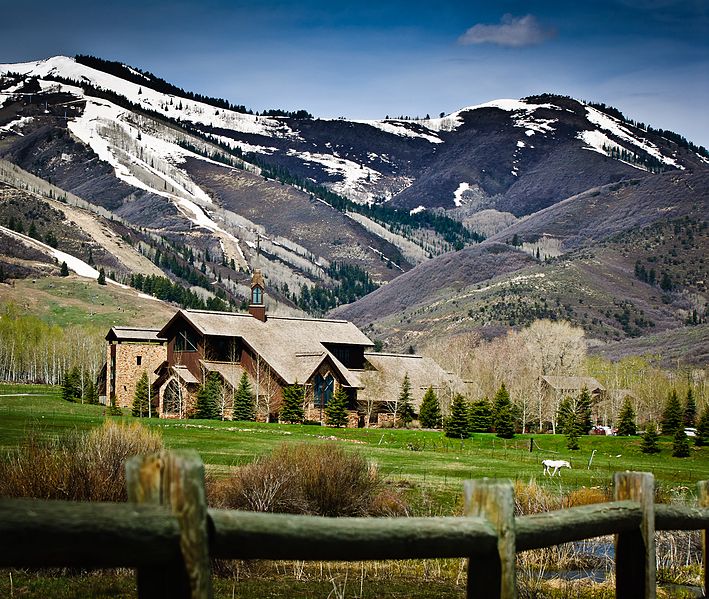
(Wikimedia Commons public domain photograph)
***
I cordially dislike the idea of “religious tolerance.” Not because (as certain of my critics will hasten to declare) I favor religious intolerance, but because mere “tolerance” seems too bloodless to me. It suggests that, while I’ll permit differing religious beliefs to exist, I do so at the cost of considerable self-restraint, and that I need to hold my nose whenever I take note of faiths or worldviews that differ from the beliefs of the Church of Jesus Christ of Latter-day Saints. I recall an Evangelical Protestant lady who once told me, quite frankly, that it made her almost physically ill to drive past houses of worship in which the doctrines of the Restoration or any other “false teachings” were being preached. (She specifically mentioned Catholicism, Judaism, and Hinduism, if I recall correctly, in addition to “Mormonism.”)
I can’t imagine such a reaction. If she was serious, she must be in a state of continual anger and perpetual unhappiness. En route to and from having lunch with my wife and my father-in-law this afternoon, though, I noticed not only a host of Latter-day Saint meeting houses but at least two Protestant churches, two Catholic churches, and a Reformed Jewish synagogue — and I think that I can confidently and honestly report feeling no surges of anger toward them or their congregants and no waves of indigestion.
I prefer to go beyond mere “toleration” to mutual appreciation. I’ve long loved (and have long appropriated) Krister Stendahl’s three principles for thinking about other religions and worldviews, including (most relevantly here) his endorsement of what he termed “holy envy.” (See, for example, my remarks at the 2011 FAIR conference, which I presented under the title of “Mormonism, Islam, and the Question of Other Religions” — and, especially, the talk’s “Conclusion.”)
This coming Tuesday will, barring some totally unforeseen development, be the last class-teaching day of my career as a full-time member of the Brigham Young University faculty. It is a teaching career that has been devoted almost entirely to instruction about non-Latter-day Saint faiths and worldviews, and overwhelmingly to instruction about Arabic and about Islam, Islamic history, Islamic philosophy and theology, and Islamic culture and civilization.
This semester has been pretty typical:
In my MESA 320 class — MESA is Middle East Studies (Arabic) — we’ve read and discussed our way through M. A. S. Abdel Haleem’s Oxford translation of the Qur’an, from beginning to end. The students have also read my little biography of Muhammad.
In my Philosophy 360R/MESA 467R class, we’ve read Charles Butterworth’s translation of the Decisive Treatise and Epistle Dedicatory of Averroës (Ibn Rushd), as well as David Buchman’s English rendering of The Niche of Lights and Michael Marmura’s translation of The Incoherence of the Philosophers, both by the great Abū Ḥāmid al-Ghazālī (died AD 1111). All three books were published in dual-language editions by BYU’s Islamic Translation Series, which it was my honor to conceive and to launch.
In my Islamic Humanities 242 class, we gave special attention to the idea of mosques in general and then to the Ka‘ba in Mecca and the Dome of the Rock in Jerusalem in particular. After considering the traditional four-part Islamic garden or (in Persian) chaharbagh as an earthly image of Paradise, we went on to look at the Grand Umayyad Mosque in Damascus and at Islamic domestic architecture as represented by the “Gayer Anderson House” in Cairo and the Topkapi Palace in Istanbul. Then we focused on the Mosque of Ibn Tulun, to the south of Cairo, and on the Grand Mosque of Cordoba (in Spain) as an exemplar of Moorish architecture.
After the midterm examination, we spent some time on the palace complex of the Alhambra, in Grenada, Spain, followed by a discussion of the mosque and university of al-Azhar in Cairo, with more general remarks about the Islamic madrasa or “college.” We continued that focus with a discussion of the Egyptian Mamluks and of the Mausoleum and Madrasa of Sultan Hasan in Cairo as an example of Mamluk architecture. We then moved to Anatolia or Turkey to examine the Sultanahmet or Blue Mosque in Istanbul and the Emperor Justinian’s great nearby Byzantine Church of Hagia Sophia, which served as the prototype for most subsequent Ottoman Turkish mosques. Next, we focused on Mimar Sinan, the most illustrious of all Ottoman Turkish architects, and on two of his greatest buildings, the Selemiye in Edirne and the Suleymaniye in Istanbul. From there, we went to the Masjid-e Shah (known since the Revolution, for obvious reasons, as the Masjid-e Imam) as a representative specimen of Safavid Iranian mosque architecture. And, finally, the last building that we studied is the magnificent Taj Mahal of India.
Class sessions on all of these buildings were interspersed among the reading assignments that formed the principal component of the course. We began the class with Ramsay Woods’s retelling of the tales of Kalila and Dimna (Vol 1, “Fables of Friendship and Betrayal from the Panchatantra, Jatakas, Bidpai, Kalila and Dimnah and Lights of Canopus”), perhaps the first great work of Arabic prose. Running throughout the course was the reading of Firdawsi’s massive tenth-eleventh-century Shahnameh, which has long been regarded as the Persian national epic and which has done much to create the culture and to form the national “psychology” not only of modern Iran but of populations in Afghanistan and other surrounding territories.
Furthermore, we read and discussed al-Ghazālī’s eleventh-century intellectual autobiography The Deliverer from Error (al-Munqidh min al-Dalal), in the translation of R.J. McCarthy, S.J., as well as Hussain Hadawy’s translation of Muhsin Mahdi’s edition of the Arabian Nights. (Someday, perhaps, I’ll tell the story of my interactions with Professor Mahdi — which include, among other things, a small but not insignificant victory of BYU over Harvard.) One class session was devoted to Edward Fitzgerald’s great recreation of the Rubaiyat (the rubāʿiyāt or “quatrains”) of al-Ghazālī’s contemporary and possible childhood friend, the astronomer and mathematician Omar Khayyam. We also read and discussed Afkham Darbandi’s rendering of the Conference of the Birds, by the thirteenth-century Sufi mystical poet Farīd ud-Dīn ʿAṭṭār of Nishapur, as well as Rudolf Gelpke’s translation of The Story of Layla and Majnun, by the twelfth-thirteenth-century poet Niẓāmī Ganjavī. The latter text can be read as a dysfunctional love story, striking like Shakespeare’s much later play Romeo and Juliet. It also makes sense, though, to read it as a Sufi mystical allegory — which is, in fact, the way I do read it.
I’ve lately been accused yet again of narrow-mindedly refusing to recognize any value in religions and religious traditions other than my own. Even if I were to be evaluated solely on my last semester’s teaching, though, I honestly find it difficult to imagine a person of whom such a thing can be said with less justice. Flaws I have in abundance. But that’s not among them.
Posted from Park City, Utah












